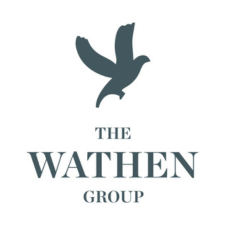However, when we work with companies of any size across various sectors, employee engagement is pivotal to shaping and implementing an organization’s vision.
Looking back at the Gallup study, approximately 70% of US employees are disengaged, resulting in lost productivity, poor customer service and organizational performance. Gallup estimates the cost of lost productivity at $3,400 for every $10,000 of payroll.
So say an organization with 2,000 employees and $65,000 average compensation, that equates to a loss of $44 million annually.
If you look at any change model, people are critical to achieving your vision:
- Jim Collins, author of Good to Great, says, “First who, then what.” Get the right people on the bus and then decide where to go.
- Dr. John Kotter’s Eight Steps for Effective Change identifies the need for a powerful guiding coalition: assemble a group empowered to create change and then encourage them to work as a team.
- Dr. Jane Dutton, Professor at the University of Michigan’s Ross School and author of Energize Your Workplace emphasizes the critical role of positive relationships at work in both understanding the impact of issues facing the organization and effective execution of strategy as a competitive advantage.
So how does an organization maximize their most important asset — employees — to gain back lost productivity and to implement change in order to achieve its goals?
There are various tools that are often underutilized, seem to require too much effort, or perhaps even met with skepticism; however, when done effectively and reinforced consistently – companies can realize sustainable and positive change. I still remember early in my career as we worked on a turnaround due to poor service launch, we held focus groups with the front-line employees. As we began the session, one of the employees told us that they had never been asked for their opinion in their twenty-five-year tenure in the organization. Boy, did they have much to say with useful ideas! What a way to create energy within an organization, utilizing existing resources, and gain valuable insights.
The following are examples of what you can do in a day to create a path for success through engaging your employees. After all, if an average company is losing $44 million annually, one work day costs the company approximately $120,500 – so you have the opportunity to make a real return on your investment of both time and money.

Employee Summits
For major organizational change initiatives, we often use a combination of employee and leadership summits that provide a rapid forum for identifying issues, setting strategic initiatives, and / or creating a shared consensus for achieving organizational goals. Typically these will be in groups of 10 to 25 and attendance based around common responsibilities or teams. For example, an executive management team strategic planning summit, an operational department leadership workshop, or focus groups.
Action Plan Workshops
There are times when issues may arise or an organization has identified specific goals that need to be addressed. Action Plan Workshops allow leadership to present key findings / background information; to ask employees to brainstorm together in order to identify activities to address the issues / goals; and for all to document those specific agreed upon actions, resources, and personnel necessary for execution.

Team Chartering
When launching a new initiative that requires inter-departmental cooperation or brings together multiple organizations, best practices indicate that a formal Team Chartering session increases the probability of effective / quality delivery. Such a session should allow the team to clarify roles / expectations; to define a process for managing the program; to create an atmosphere for resolving issues in a nimble and efficient manner; and to ultimately contribute to a high level of team performance throughout the initiative.
Communications
This is actually not something you can do in one day – it needs to be done every day to reinforce a culture of employee engagement. Before any of the initiatives described above, there needs to be a clear understanding of why employees should commit themselves to a day outside of normal responsibilities. Following the initiative, there should be documented follow up – paving the way for progress reporting. Then, of course, communicating team wins and recognizing employees for their contributions.
Key to an effective employee engagement program is regular communications via written and informal employee forums, brown bags, and other gatherings when management and supervisors regularly share updates about the organization and related to issues and new initiatives. This is not as simple as posters and slogans, but genuine, two-way communications. We actually discovered in one very hierarchical organization, we needed to provide skills training on how to effectively communicate and to support such an effort at all levels of the organization. One manager after the second training session offered that he expected that the training program would help him become a “more respected manager..” and ultimately help him contribute to “improving the organization’s image in the public’s eye.”
Gaining back lost productivity won’t be easy, but in my experience, the initiatives described above provide realistic opportunities for an organization to do so and to sustainably achieve its business goals.

